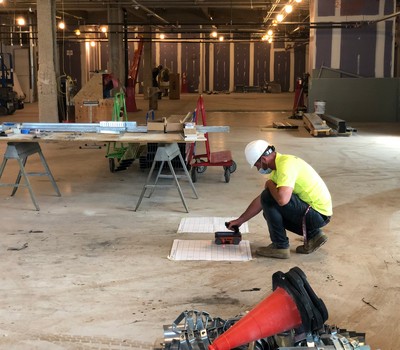The Ultimate RainierGPR Concrete Scanning Option Described
The Ultimate RainierGPR Concrete Scanning Option Described
Blog Article
Checking Out the Midst: A Comprehensive Guide to Concrete Scanning and Its Diverse Applications
In the realm of construction and facilities growth, the meticulous process of concrete scanning holds an essential duty in ensuring the structural integrity and security of tasks. As modern technology continues to develop, the applications of concrete scanning have expanded far past simple surface-level evaluations.
Value of Concrete Scanning
Understanding the value of concrete scanning is vital in making certain the safety and stability of structures during construction and restoration tasks. Concrete scanning makes use of advanced innovations such as ground-penetrating radar (GPR) and electro-magnetic induction to identify embedded items, gaps, or other anomalies within concrete structures - RainierGPR Concrete Scanning. By performing thorough scans before boring, reducing, or coring right into concrete, building and construction groups can avoid unintentional damages to crucial architectural components like rebar, conduits, or post-tension cable televisions. This positive technique not just protects against pricey repairs and project hold-ups yet additionally boosts overall building and construction safety by mitigating the danger of structural failings or collapses due to jeopardized integrity.
Additionally, concrete scanning plays a pivotal function in ensuring conformity with building ordinance and guidelines that mandate the security of existing structural parts during building tasks. By properly mapping out the internal composition of concrete, scanning modern technologies enable building and construction experts to make enlightened choices that promote the structural stability and longevity of structures and framework projects. In essence, the relevance of concrete scanning hinges on its ability to safeguard both the structural honesty and the workers associated with building and construction endeavors.
Technologies Used in Concrete Scanning
Concrete scanning depends on sophisticated modern technologies such as ground-penetrating radar (GPR) and electromagnetic induction to properly detect embedded things and anomalies within concrete structures. Ground-penetrating radar operates by discharging high-frequency electromagnetic waves into the concrete.
Electromagnetic induction, on the other hand, works by generating magnetic fields around a concrete framework via a transmitter coil. When metal items exist within the concrete, they disrupt these electro-magnetic areas, creating eddy currents to stream with the steel. By measuring the modifications in the electromagnetic areas with a receiver coil, the system can identify the location of metal things in the concrete.
These sophisticated innovations play an essential function in non-destructive screening, making certain the safety and stability of concrete structures in various industries.
Applications in Building And Construction Industry
Within the construction sector, concrete scanning innovation locates varied applications that enhance job efficiency and security. One key application is the detection of rebar, post-tension cable televisions, and other ingrained items prior to drilling or reducing right into concrete structures. By properly mapping out these components, building groups can stay clear of costly problems, make sure architectural stability, and prevent prospective security hazards. In addition, concrete scanning is utilized for finding spaces, such as air pockets or locations of degeneration within concrete, which can endanger the total stamina of a framework. By determining these voids early on, construction specialists can take essential actions to address them and keep the durability of the structure. Concrete scanning plays a crucial duty in high quality control by validating the thickness of concrete covers over support, ensuring conformity with style specifications and criteria. In general, the applications of concrete scanning in the construction sector contribute significantly to enhancing project operations, minimizing risks, and supplying top quality outcomes.

Security Benefits of Concrete Scanning
In the realm of building security, the application of concrete scanning modern technology offers an extremely important benefit in preemptively identifying prospective threats and strengthening architectural stability. By using sophisticated scanning techniques such as ground-penetrating radar (GPR) and electromagnetic induction, building teams can accurately locate rebar, post-tension cables, avenues, and various other concealed things within concrete frameworks. This aggressive approach substantially minimizes the risk of accidental strikes throughout exploration, reducing, or coring activities, thereby preventing pricey problems, injuries, and job delays.
Furthermore, concrete scanning boosts worker security by providing real-time details concerning the architectural condition of concrete components. By dealing with potential safety and security issues immediately, concrete scanning contributes to producing a secure working environment and mitigating the probability of structural failings or mishaps on building and construction sites.
Future Trends in Concrete Scanning
Emerging innovations in scanning modern technology are poised more information to transform the area of concrete evaluation and evaluation. One major trend that is acquiring traction is the assimilation of fabricated intelligence (AI) and artificial intelligence algorithms into concrete scanning devices. By taking advantage of the power of AI, these systems can examine substantial amounts of information collected throughout scanning procedures to give even more accurate and detailed understandings right into the problem of concrete structures. This can help in spotting covert defects, anticipating possible architectural failings, and even advising maintenance methods.
One more considerable trend is the development of even more portable and user-friendly scanning gadgets. Miniaturization of scanning devices enables easier accessibility to confined rooms and remote places, making examinations extra extensive and effective. In addition, advancements in cordless communication technologies allow real-time data transfer and evaluation, helping with quicker decision-making processes.
Furthermore, there is a growing emphasis on sustainability in concrete scanning technologies - RainierGPR Concrete Scanning. Suppliers are increasingly incorporating environmentally friendly materials and energy-efficient features right into their tools to reduce environmental influence. These future fads are established to boost the effectiveness, accuracy, and sustainability of concrete scanning practices, shaping the industry's future landscape
Conclusion
In final thought, concrete scanning plays a crucial function in the building sector by ensuring the safety and effectiveness find out of numerous tasks. Resources As technology advancements, the future of concrete scanning holds appealing advancements for boosting building and construction processes.

Report this page